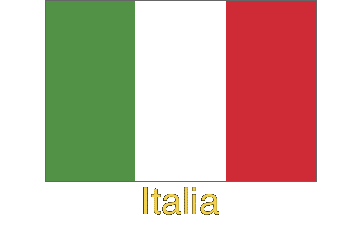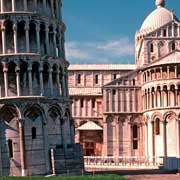Photos of Pisa and Siena, Toscana’s gems, Italy
Pisa and Siena, Toscana’s gems
Toscana (Tuscany) is one of the most beautiful regions in the heart of Italy. It lies along the west coast and covers about 23,000 km², with around 3.5 million people. It is an important agricultural and industrial centre; its Chianti district is famous for its wines and Tuscan virgin olive oil, so crucial in its cooking, and is Italy’s finest. Tuscany has long been an important Italian centre of art and learning. In ancient times, this land was the home of the Etruscans, a people that probably migrated there from Asia Minor, with a language as yet undeciphered, who built a vibrant civilisation before the Romans arrived on the scene.
you may then send it as a postcard if you wish.
Pisa is an old city of almost 100,000 inhabitants living on both banks of the River Arno near the Ligurian sea. It has a university founded in 1343 and an academy of fine arts. The famous astronomer Galileo was born here. The most famous building in Pisa is the Leaning Tower, a 55 metres high bell tower leaning 4.4 metres out of line when measured from the seventh story. Construction of the tower began in 1173 and was finished between 1360 and 1370. It was built on unstable soil: the ground beneath the building started to sink after the first three stories were built. In 1990 the tower was closed; its lean had been increasing on an average of 1.3 mm per year. Engineers stabilised the tower’s foundation and straightened it slightly (1 cm) by 1994 to prevent its collapse. The tower, or campanile, is part of a complex of three buildings - a baptistery, a church, and the bell tower. Together the three structures form the Cathedral of Pisa, one of the world’s most beautiful building groups. They were built during the Romanesque period and are noted for their colourful marble and decorative arches.
Siena is a beautiful city, built on three hills and surrounded by its old ramparts. It has many beautiful Gothic buildings in “burnt sienna”, various shades of red-brown. The city, probably founded by the Etruscans, became one of Europe’s major centres around the 13th and 14th Centuries. It was a rival to Florence and defeated the Florentines in the Battle of Montaperdi in 1260; however, the city was occupied by Florentine forces in 1269, and its merchants then ruled Siena. It became an important centre of commerce and art. The Palio, a reminder of those glorious medieval days, is a festival that culminates in a bareback horse race around the Piazza del Campo, Siena’s magnificent central square.


















